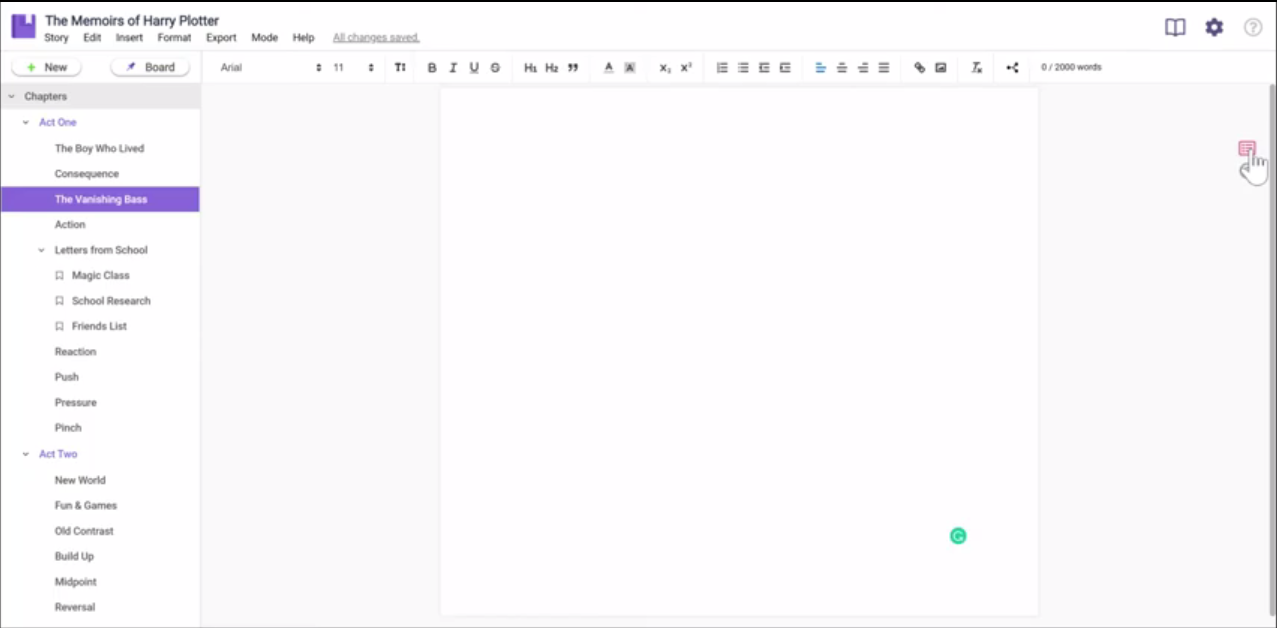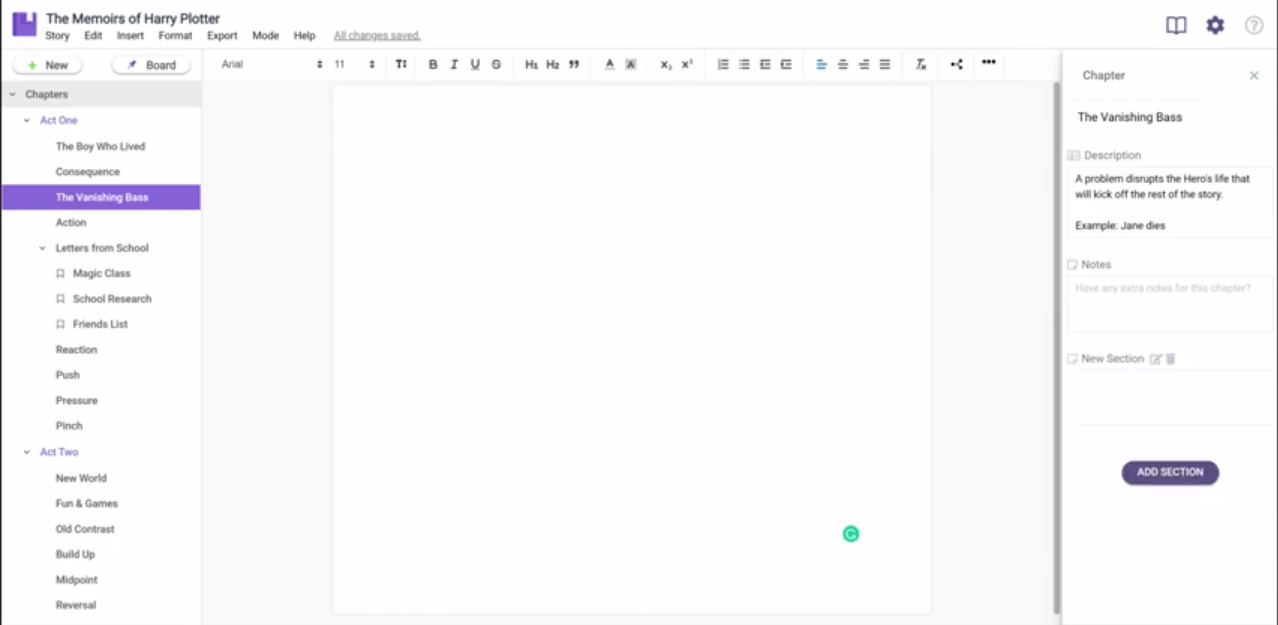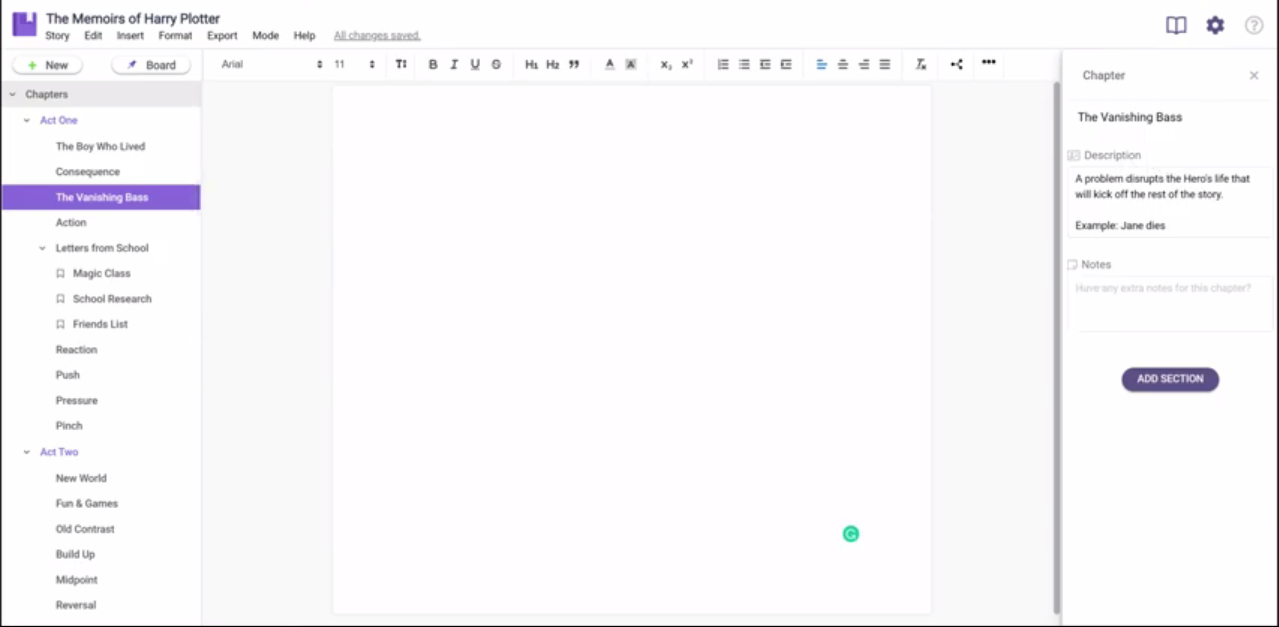10 Tips on Character Bio Templates

Character bio templates with LivingWriter
It can be utterly frustrating and tiring to create character bios especially when you lack outlining tools that help usher life and light to your story.
We all have a story or an experience to narrate and so does each of your characters. The key is to create a unique experience with character so that your tale comes across as engaging and genuine.
Interestingly, the more elaborate your character, the more the readers can relate to them and the higher the chances of your masterpiece making it big.
To whip up your characters into shape, we recommend crafting a character bio for them.
This guideline takes you through character bios, mini character bios and offers the best tips and schemes to intensify your characters.
Let’s jump right in!
What is a Character Bio?
A character bio, also referred to as a character profile, is a few sentences or pages of your character’s information including their traits. Character bios help to spice up character development and maps out your character’s arc.
The goal of creating a character bio is to offer your readers a means of connecting with your character on a deeper level, so the bio needs to detail facts that make your character human.
What is A Mini Character Bio
A mini character bio is a one-sentence introduction or brief description of your character. For instance, “Harry Potter is a young wizard, the only child of James and Lily Potter who is famously known for surviving the deadly strike of Lord Voldemort when he was a baby.”
Mini character bios come in handy when pitching your characters.
Tips for Creating Your Character Bio Template
When developing your character bio, it can be hard to squeeze out all the specifics of your character in one go.
LivingWriter has assembled the best tips and tricks to help you get started with precise directions on how to expand your story elements using its incredible features.
To open up the notes sidebar, click on a particular chapter of your story or the little notes icon on the right side of your screen. 
To create notes for characters click on your character in the “Story Elements” sidebar. Each notes area comes with a preset section. But from there you can manage it however you want.

Clicking on the “Add Section” button allows you to add an infinite amount of sections. Clicking the Edit icon enables you to change the label of that box to whatever you like. 
In your sections, you can add plot points, notes, background histories and whatever else you’d like. They’ll always be at arm’s reach! 
- Personal Details
This one is a walk in the park! What are the basics of every character? Height, weight, hair, eye and skin colour, nationality, preferences etc.
Offer the police illustration of your character and how they are unique. Avoid using clichés such as “hot lady” or “muscular man.”
A good example of an intriguing character description is Steve Rogers aka Captain America. He is a superhero who ironically started as a puny man with an amazingly big heart.
- Family
Family is everything! A character’s family molds their personality. Even the most evil villains have a certain aspect of belonging to a unit.
Remember the Dark Knight’s Joker who described how his dad put a smile on his face?
- Strengths
What is your character best at? So much of your story will emphasize individuals overcoming hurdles. So the best way to convey that is to see what your characters excel at and make the stumbling blocks work in their favour.
Describe your characters’ strengths and use them to make your characters shine.
- Weaknesses and Flaws
While commonly used interchangeably, weaknesses and flaws vary in that the latter is a little more personal.
When describing your characters’ weaknesses, focus on how their negative perception affects their accomplishment. For example, Elle Woods the Legally Blonde bombshell relies too much on what others think of her rather than what she can succeed in.
With character flaws, someone would be willing to save the whole world at the expense of their own lives without winking.
For example, in The Spiderman, Peter Parker loves being the neighbourhood hero and chooses fighting crimes over hanging out with his friends. This incapability to be there for his friends is a major character flaw.
- Backstory
Everyone has a background. Backstories are crucial because they shape a character’s future.
Consider Gamora from the Guardians of the Galaxy. She had a home and a mother but her planet was destroyed by Thanos who then adopted her and turned her into the fiercest warrior of the galaxy.
- Empathy
Always remember to explore this emotion as it is the key to connecting your characters with the audience.
Empathy isn’t for the good characters alone. Even villains need empathy. Take for instance Black Panther’s main villain, Killmonger. Our first instinct was to hate him but once we realized he was left all alone with his father’s dead body, we somehow relate with his quest for vengeance.
The aspect of empathy made Black Panther a profound film.
- Ambitions and Desires
Without desires and needs, your character will feel like a fleeting shadow in your story.
What drives their intentions is arguably the most essential part of your character biography. The sole aim of an audience watching a movie or a TV show is to see characters achieving their goals.
- Obstacles
The epitome of character description is obstacles and how characters tackle such. It’s important to describe what stands in the way of your character fulfilling their dreams.
Indiana Jones desired to be the finder of the great ark but he had to defeat the Nazis first.
So every character has to tear down the stumbling block in front of them to fulfil who they are in the bio.
- Skeleton in the Closet
What’s your character’s deepest secret that they would rather take to their grave? It could be a hidden fear of children or a crazy obsession for someone. Whether a big or small secret, let that undisclosed detail get them in trouble.
This prompt weapon, coupled with emotion will ideally dictate the direction of your story.
Try LivingWriter for your bio formation! It gives you more control over how you write.